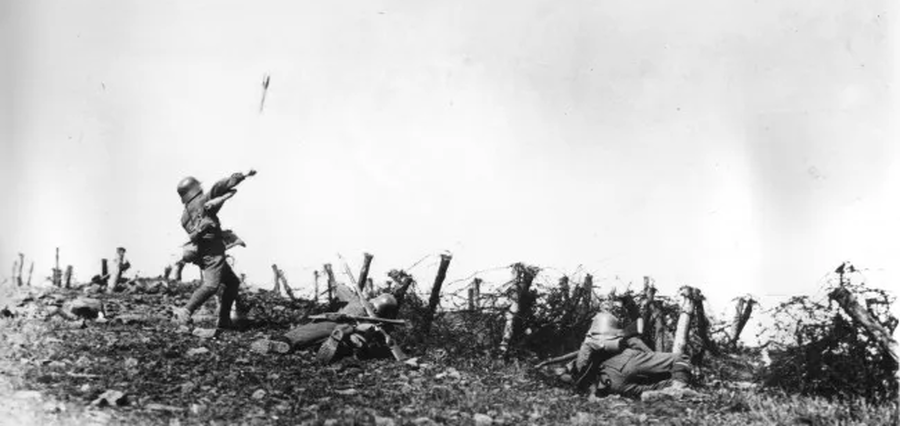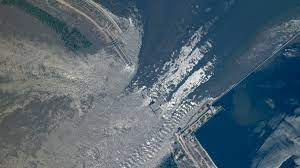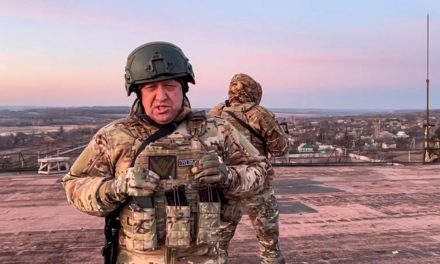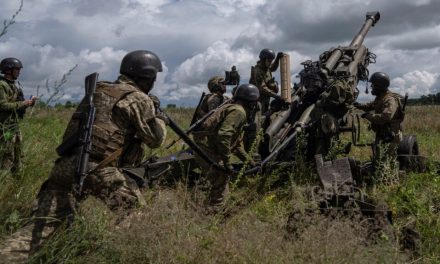It has now been a month since the Ukrainian offensive began. Many of us are probably wondering what is going on. The reporting from the front is usually scarce. After the initial enthusiasm in our media, interest has now cooled considerably. How many times can you report continued fighting that results in a few hundred meters of ground being conquered? No cities falling/captured, no rivers crossed, no armies surrounded, fleeing or surrendering.
How is the Ukrainian offensive actually going? Has it stuck? Such questions are widely discussed in the Western media. Our concern for what is happening there shines through. These are the kinds of questions that infuriated Ukrainian commander Zaluzhny in an interview with the NYT. The same irritated tone was also heard several times from the Ministry of Defense in Kiev and from President Zelensky: “Some people think it’s a Hollywood movie and expect results now,” he said in an interview with the BBC the other week. “What is at stake are people’s lives,” he continued. “We want to proceed on the battlefield in a way that we think is the best.”
If you stick with Ukraine in this war, you can worry about two things right now. The first, mentioned above, that the Ukrainian offensive is stuck, the Russians do not give way and the war of positions continues ad infinitum. It would – according to many – jeopardize the long-term support that Ukraine enjoys in the West. Opinion in many countries can change over time, a new pro-Russian party can come to power, Donald Trump can be elected president again. Therefore, Ukraine must win the war, or at least gain ground as quickly as possible. Ideally, one would like to see something spectacular – cities conquered, rivers crossed, armies surrounded, fleeing or surrendering…
The second reason for concern is that – with all the above arguments in mind – the offensive is pushed, forced, to attack on a large scale, which would inevitably lead to very, very large losses. This is exactly the kind of warfare that we have seen in Ukraine – from the Russian side. Wave after wave of attacking infantry, with or without armored troops, with terrible losses as a result. With stunning indifference to their own losses in manpower and materiel, Russian generals send their troops against Ukrainian defensive positions until the enemy falls or runs out of ammunition, wears down, retreats. A great many of the soldiers who are sacrificed so easily come from poor parts of Russia. Often they originate from non-Russian ethnic groups – such as Buryats, Tuvins or people from Dagestan. People whose lives are easier to sacrifice than if they were boys from Moscow or Saint Petersburg.
It was precisely in this brutal way that they managed to conquer almost all of Bachmut, after several months of fighting. The bulk of the endless raids in Bachmut were carried out by the forces of the Wagner group, which consisted largely of long-term convicted criminals, recruited by Prigozhini from prisons around Russia. Most also died in Bakhmut while being forced to launch suicide attacks against Ukrainian defense lines.
This is precisely what we – friends of Ukraine – hope will not happen during the Ukrainian offensive: large-scale bloody attacks resulting in extra large numbers of casualties. So far, it looks like the Ukrainian side is very careful to avoid it. That is most likely the explanation for why the offensive is so slow.
The Russians have had plenty of time to build this system. Even if it was not known exactly where the Ukrainians will attack, it is quite obvious, also for the Russian leadership, that the main target will be in the south, in the direction of the sea and then Crimea. The Ukrainian forces are facing a series of gigantic, fortified defense lines with reinforced trenches, bunkers, buried tanks and minefields. Since last year’s Ukrainian offensive in the area of Kharkiv and towards Kherson, the front has stood still, much like on the Western Front during the First World War. The Russians have had plenty of time to build out a line of fortifications not seen since the First World War. Then both sides tried to break through the enemy’s defensive line with massive infantry attacks. We’ve all seen images of soldiers climbing out of trenches and running to be mowed down by enemy machine guns. It is exactly the kind of bloody and fruitless mass attacks that took place there – at Verdun, at the Somme, that we hope to avoid witnessing in southern Ukraine today.
Here history also gives us a hint about what is most likely happening at the front right now. During the latter part of the wars on the Western Front, the Germans developed a new type of warfare – light, highly mobile units – stormtroopers (Sturmtruppen). Instead of massive infantry assaults that followed massive artillery barrages, the stormtroopers infiltrated Allied positions, attempting to sneak past the strongest defenses and strike in depth against previously identified weak points in the defenses. The objective was primarily to knock out the Allied headquarters and artillery. The stormtroopers’ greatest advantage was surprise and mobility. Instead of towing heavier caliber weapons, lighter weapons and hand grenades were used. The new warfare also required major changes in the mentality of the officer corps. Instead of large-scale attacks planned in advance at army headquarters far from the front itself, with orders to be executed on the spot, responsibility was now delegated to an officer or non-commissioned officer on the spot. Responsibility was now shifted from the operational to the tactical level.
And that’s exactly what seems to be happening at the front in Ukraine right now. The leadership in Ukraine has apparently done its history lesson. Ukrainian “special forces” infiltrate the giant Russian fortifications and try to knock out command centers, artillery nests and ammunition depots. Ukrainians laboriously work their way into the Russian lines, at best a few hundred meters per day. And it takes time, a lot of time.
On the German Western Front, the stormtroopers’ local successes came too late, they took too long to turn the tide of war. Meanwhile, the German war effort and will to defend collapsed. The war was lost.
After the D-Day landings in Normandy, it took over a month before the Allies were able to break through the German defensive line, the Atlantic Wall. The British captured the important Normandy port city of Caen only on July 9, 1944. Decisive for the Battle of Caen were the Allied aerial bombings that destroyed over 70% of the city’s buildings.
During the Kuwait War, it also took over a month of intense aerial bombardment by Iraqi forces before the ground offensive really got underway.
Today, Ukraine does not have any air forces that could bomb the Russian defense lines. The war is taking place on the ground and we can count on it to take time before the Ukrainians break through the Russian front. A lot of time.




